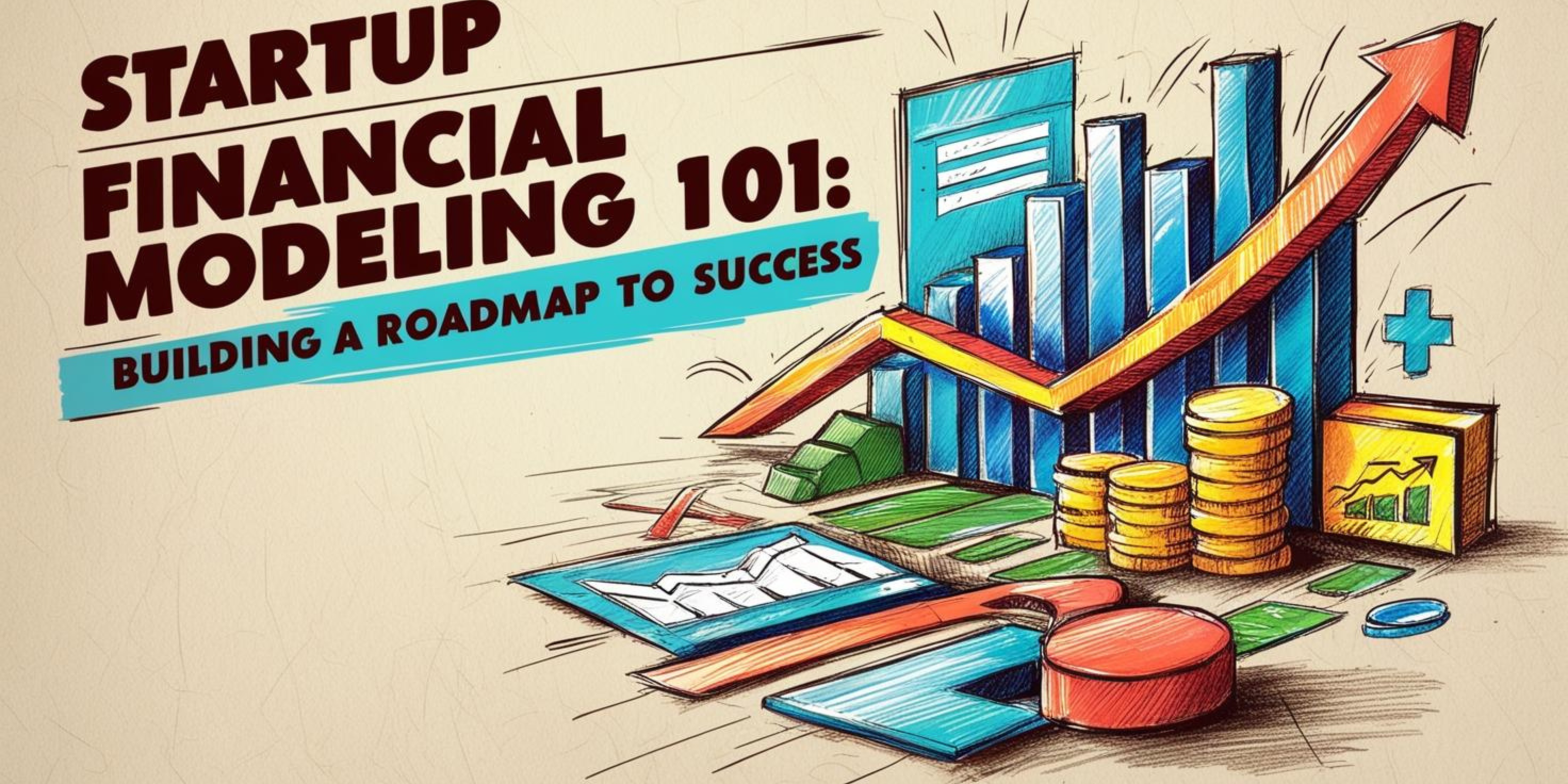Startup Financial Modeling 101: Building a Roadmap to Success 🚀
Master

Startup financial modeling
Startup financial modeling is the process of creating a dynamic and detailed projection of a startup’s financial performance. It provides a structured framework to estimate revenues, expenses, cash flow, and other financial metrics, helping founders and stakeholders understand the financial health and potential growth of the business.
A financial model is an essential tool for startups to make informed decisions, set realistic goals, and attract investors by showcasing the business’s scalability and profitability.
Key Components of Startup Financial Modeling
1. Revenue Projections:
• Estimate how much money the startup expects to generate over a specific period.
• Common approaches include using market size, pricing, and customer acquisition assumptions.
2. Cost Structure:
• Breakdown of fixed and variable costs, such as operational expenses, salaries, and marketing budgets.
• Helps identify the startup’s burn rate (how quickly it uses cash).
3. Customer Metrics:
• Key metrics include Customer Acquisition Cost (CAC), Lifetime Value (LTV), and churn rate.
• These metrics are vital for SaaS and subscription-based startups.
4. Cash Flow Projections:
• Tracks the flow of cash in and out of the business to ensure the startup has enough liquidity to operate.
• Helps founders avoid cash shortages.
5. Profit and Loss (P&L) Statement:
• Summarizes revenues, costs, and expenses over a specific time to assess profitability.
6. Balance Sheet:
• Provides an overview of the startup’s financial position, including assets, liabilities, and equity.
7. Scenario Analysis:
• Includes best-case, worst-case, and base-case scenarios to evaluate risks and opportunities.
8. Funding Needs and Use of Funds:
• Projects how much capital the startup requires to operate and scale.
• Shows investors how the funds will be allocated (e.g., R&D, marketing, hiring).
Why is Financial Modeling Important for Startups?
1. Decision-Making:
• Provides clarity on whether the business model is sustainable and profitable.
• Helps founders prioritize spending and identify growth opportunities.
2. Fundraising:
• Investors expect a well-structured financial model to evaluate the potential return on investment (ROI).
• Demonstrates the startup’s financial viability and growth trajectory.
3. Risk Management:
• Identifies potential financial risks and allows founders to plan mitigation strategies.
4. Goal Setting and Tracking:
• Establishes financial targets and milestones.
• Tracks actual performance against projections to adjust strategies.
Steps to Build a Startup Financial Model
1. Define Assumptions:
• Base projections on realistic assumptions, such as market growth, pricing, and customer acquisition rates.
2. Forecast Revenues:
• Start with the expected number of customers and multiply by pricing to estimate revenue.
3. Estimate Costs:
• Include direct costs (e.g., product development) and indirect costs (e.g., salaries, rent).
4. Develop Financial Statements:
• Create projections for the income statement, balance sheet, and cash flow statement.
5. Run Scenarios:
• Test different assumptions to evaluate the impact on financial outcomes.
6. Visualize Data:
• Use graphs and charts to make the model more understandable for stakeholders.
Common Financial Models for Startups
1. SaaS Financial Model: Focuses on recurring revenue, LTV, CAC, and churn rate.
2. E-Commerce Model: Emphasizes inventory management, revenue per user, and marketing costs.
3. Marketplace Model: Projects revenues based on commission, transactions, and user growth.
Summary
Startup financial modeling is a critical tool for planning, managing, and scaling a business. It helps founders gain insights into the financial aspects of their business, attract investors, and ensure sustainable growth. A well-crafted financial model isn’t just about numbers—it’s a roadmap to achieving startup success.